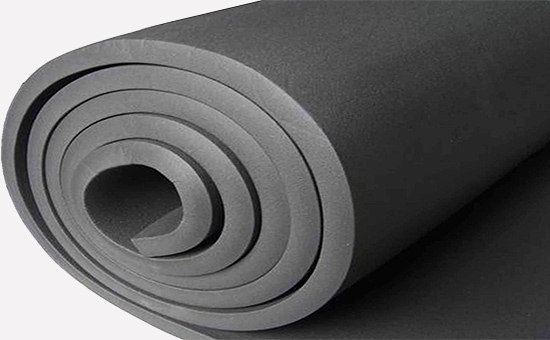
Tire reclaimed rubber made from waste rubber tires can replace natural rubber to produce wear-resistant rubber sheets, significantly reducing raw material costs. When using reclaimed tire rubber to prepare low-cost wear-resistant rubber sheets, increasing the wear resistance of the rubber can further improve the overall performance of the wear-resistant rubber sheets and prolong the service life. In actual production, manufacturers can improve the wear resistance of rubber sheets by adjusting the types and amounts of raw rubber and compounding agents.
1. Use butadiene rubber in moderation
Butadiene polymerized butadiene with regular internal structure has excellent elasticity and wear resistance after vulcanization, and has good compatibility with tire reclaimed rubber. The use of butadiene rubber in the wear-resistant rubber sheet with tire reclaimed rubber as the main raw material can further improve the wear resistance of the tire reclaimed rubber rubber sheet. In actual production, rubber sheet manufacturers can combine tire reclaimed rubber with a small amount of natural rubber/butadiene rubber to produce wear-resistant rubber sheets, with low production costs, higher mechanical strength and better wear resistance.
2. Choose high wear-resistant carbon black
High wear-resistant carbon black is a typical reinforcing carbon black, and its reinforcing performance is second only to super wear-resistant carbon black. It is the most commonly used carbon black in the production of rubber products. When using tire reclaimed rubber 2LLYY1214 to produce wear-resistant rubber sheets, wear-resistant rubber sheet manufacturers can use high-wear-resistant carbon black to reinforce, appropriately increase the amount of high-wear carbon black, and significantly improve the wear resistance of the rubber sheet, the tensile strength of the finished product, and the Tear strength and aging resistance are better.
3. Add a small amount of molybdenum disulfide
Molybdenum disulfide is a black powdery inorganic substance with metallic luster. It is the main component of molybdenite. It has a two-dimensional layered structure similar to graphene and has excellent physical and chemical properties. The addition of molybdenum disulfide to rubber can significantly improve the wear resistance of the rubber compound, reduce the surface friction coefficient, and the hardness of the rubber compound does not change much. When using reclaimed tire rubber to produce low-cost wear-resistant rubber sheets, you can add a small amount of molybdenum disulfide (the price of molybdenum disulfide is high, and excessive amounts will increase the cost of raw materials) to improve the wear resistance of the rubber.
When using reclaimed tire rubber to produce wear-resistant rubber sheets, rubber products manufacturers choose sulfur vulcanization systems, which have higher physical and mechanical strength and better wear resistance. Reasonably select the type of compounding agent and determine the amount of compounding agent. The tire reclaimed rubber can be used to produce wear-resistant rubber sheets with tensile strength greater than 20MPa, Akron abrasion less than 0.03m³, and elongation at break greater than 300%. In actual production, there are other ways to improve the abrasion resistance of the tire reclaimed rubber wear-resistant rubber sheet. The editor will continue to discuss with you later.
Exclusive original article [commercial authorization] reprint, excerpt and excerpt in any form are prohibited without written authorization. Focus on Hongyun rubber: learn the process formula and raw material technology of producing rubber products from recycled rubber to help you reduce costs and increase profits